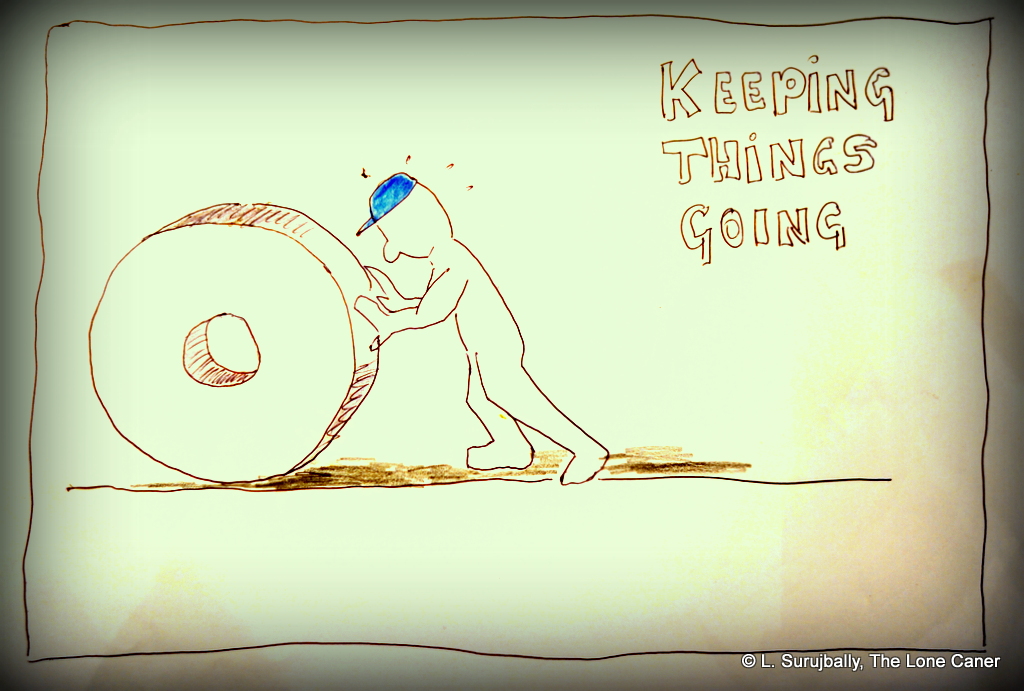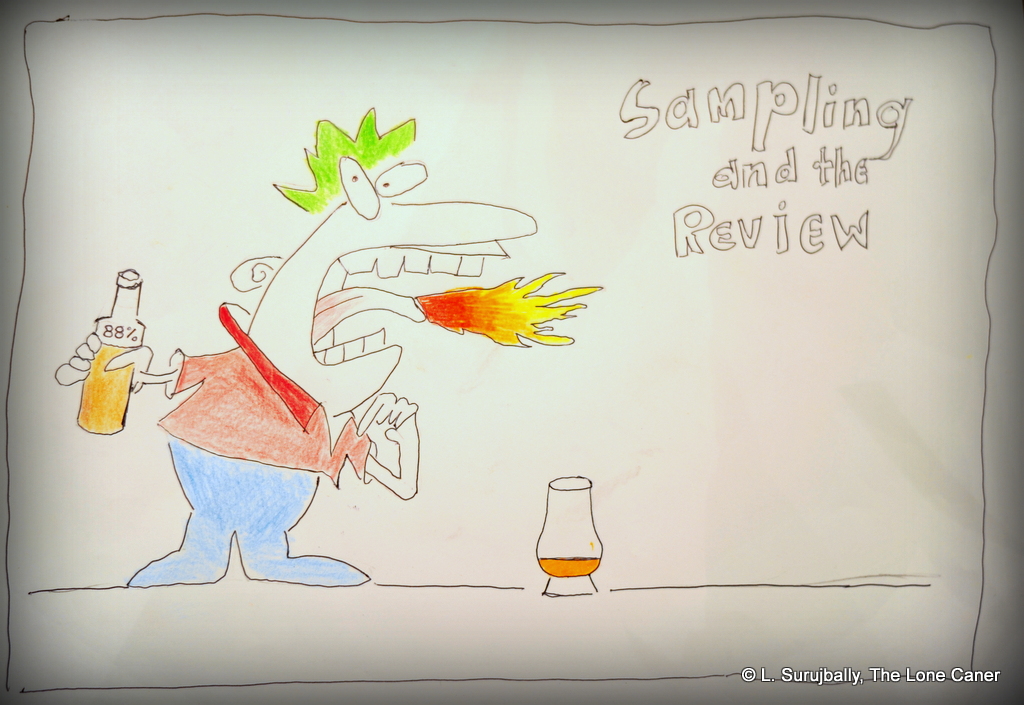
Part 5 – Keeping things going
So let’s sum up the preceding four parts.[Part 1] [Part 2] [Part 3] [Part 4]
- Understand what you’re getting into, and why you’re doing it
- Go with a comfortable writing style that suits you
- Design a nice look to your site
- Know how to taste, score, note and write (and practice a lot)
- Know your rums and the larger world around them
- Sample around extensively (safely!!! I am not advocating rampant boozing)
- Be courteous
- Be consistent
If you’ve made it to fifty or more reviews, passed a year of writing, then it’s reasonable to assume this is no longer a mere hobby, but something a shade more serious. Still, as time and rums pass by, interest flags and it’s perhaps no longer as much fun as it used to be…more like work. God, do I have to do another one of these? Been dere, dun dat.
The most common comments I hear from other bloggers, and often experienced myself, are these:
(a) Site hits are too few and too fickle, showing massive variations
The more you write and the more you are active online, the more hits come your way. Of course, this presupposes some level of quality in your work, and a network of contacts who recommend your site and people who share taste, and your way of expressing it. The CocktailWonk suggested finding one’s niche in an increasingly crowded writers’ market, which is a good idea – writing in a way, and about subjects, which no-one else is.
However, never underestimate the power of online “boosting” either. Now, if your perspective is one of “If I build it they will come” and you’re writing to speak of your experiences, your journey, without reference to how many others see what you’ve done…then letting your site sit there, idling gently, building word of mouth, is just as good as any other.
Online promotion is for people who can’t wait, are impatient to get visibility, and understand the hits multiplier that social networks enable. When you put something up, distribute and share on twitter, G+, post on the Rum forum on reddit, use Facebook to like and share, post to StumbleUpon, LinkedIn, Tumblr…these things can – in the short term at least – double and triple your site hits. The flip side is some people will inevitably see it as crass, whatever that means given the reputation of the drink we’re discussing.
(b) Comments are few and far apart
Really, this is irrelevant. People comment when they feel like. You can certainly try to be controversial, write opinion pieces seeking engagement, create a forum for comments like the Ministry of Rum or the RumProject, be active on the FB fora, but here again, it simply takes time to get the volume.
(c) The damn thing is too expensive
Good point. It is pricey. Go cheaper and build “review volume”, and remember this – you will never be able to taste them all, and there will always be an old monster you really wanted that will never be yours. At the forefront, keep in mind why you are here – if your goals have changed and this is not worth the cash, shutter the house and walk away. As a balm, I also refer you to my rather humorous take on affording your favourite tipple, which I name the “El Dorado Problem”, here.
(d) It takes too much of my time
It can be done if you ration your time appropriately. And of course, if your commitment and persistence is there. Just for the record: I have a full time job in a foreign country; a family that has demands on my time; other interests and hobbies; a social life (such as it is); I’m studying for a professional accreditation; I’m learning another language. I balance all this with my writing. If a lazy sod like me can do all this, there should be no reason why you can’t.
(e) Bottles or samples acquisition sucks. I’ve cleaned out all locals shops and bars
Create a sample-exchange network if you can (this suggests you have something someone wants and local postage laws permit it); interface with distilleries or brand reps; buy abroad and ship to yourself. Aggressive industry solicitation (“I’d like to review your products on my site…”) will work, and for sure, good relations with store owners is enormously useful – they often allow you to try heels for nothing, (like Dirk Becker’s store in Berlin, and Andrew Ferguson in Calgary always did for me, bless ‘em.)
(f) People cannot be made to have an interest in rum no matter the effort
This is your job to fix. Consider yourself a rum ambassador. Spread the gospel. Those that don’t like rums are sadly misguided lambs in need of a shepherd to lead them to the cool green grass of the True Faith.
But all that aside, there are many ways to keep your interest from fading, and some of the things you can do at various times are:
1. Attend as many tastings or festivals as you can, and then write about them. Hell, run your own. At the very least you will meet people and get tasting notes for expensive rums you might not otherwise be able to afford or find.
2. Read the blogs from around the world; European ones often speak to rare and very old craft rums about which we can only dream. Google translate does a decent job for those who are not multi-lingual, which is most of us.
3. Comment on others’ blogs (but really, do this if you have something to say, not just because you want to generate hits for yourself), join the Facebook page, start your own…make friends, even if only online.
4. Send and/or share samples on your own cognizance, of rums which you have that others might not. I’ve given away more than half of the Skeldon 1973, for example, and my PM 1980 is long gone down the gullets of the Liquorature Collective, including (to my utter delight) the Rum-despising Maltmonster and his Hippie acolyte.
5. Start a rum club of your own with like minded souls.
I’ve been doing this since 2009, and my interest is maintained by new rums, new friends, correspondents, festivals, and being part of something I feel is of worth. I find that staying in touch generates reciprocal goodwill and increases my engagement with the larger community. And the writing, of course, keeps me busy too. At the end, it comes down to you and what you are prepared to do, and how seriously, or long term, you view the activity. Like any long term endeavour, you should love what you do, know what you’re about, take pride in it, and be professional. Have a sense of humour about it all, and keep the wheels turning. It can, with some effort, be a pastime or vocation that stretches into decades.
Hopefully these comments will give a sense of what it takes to remain that way.
***
Thanks and a big hat tip for helping me out with parts of, and background to, this essay go to:
- Henrik Kristoffersen of RumCorner for massive investment of time and effort to comment and make this better. I stole some of his remarks.
- TheFatRumPirate for portions of his starter-rum list
- Josh Miller of Inuakena for a read through and encouragement.
- All the online rum writers who over the years have candidly discussed their experiences with running a blog.
- The Little ‘Caner, nine-year-old scion of Clan ‘Caner, who helped me with the cartoons, lent me his pencils (“Colour inside the lines, Dad!”); and the beautiful, long-suffering Mrs. Caner, who loves me still, even if I spend too many evenings writing stuff like this.



